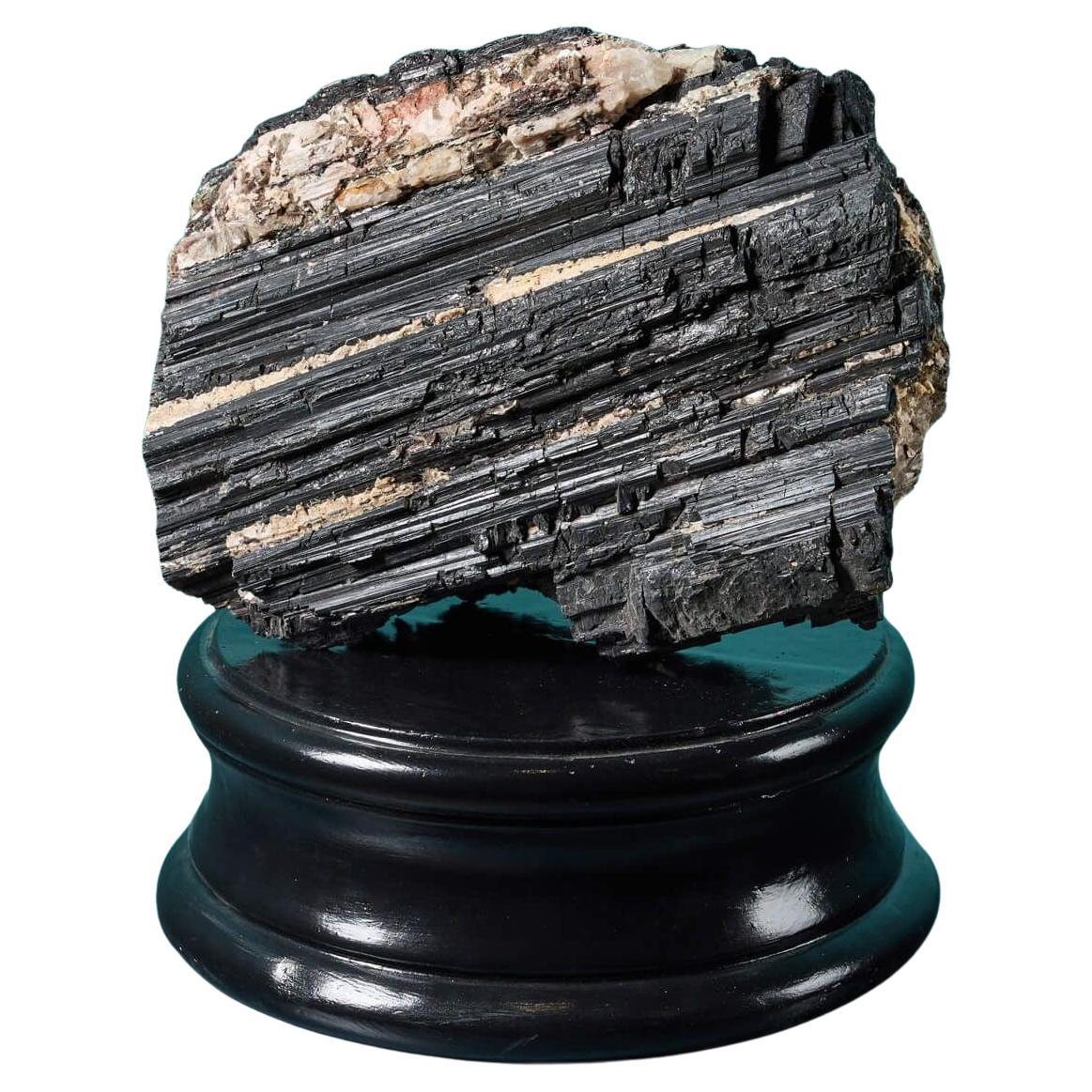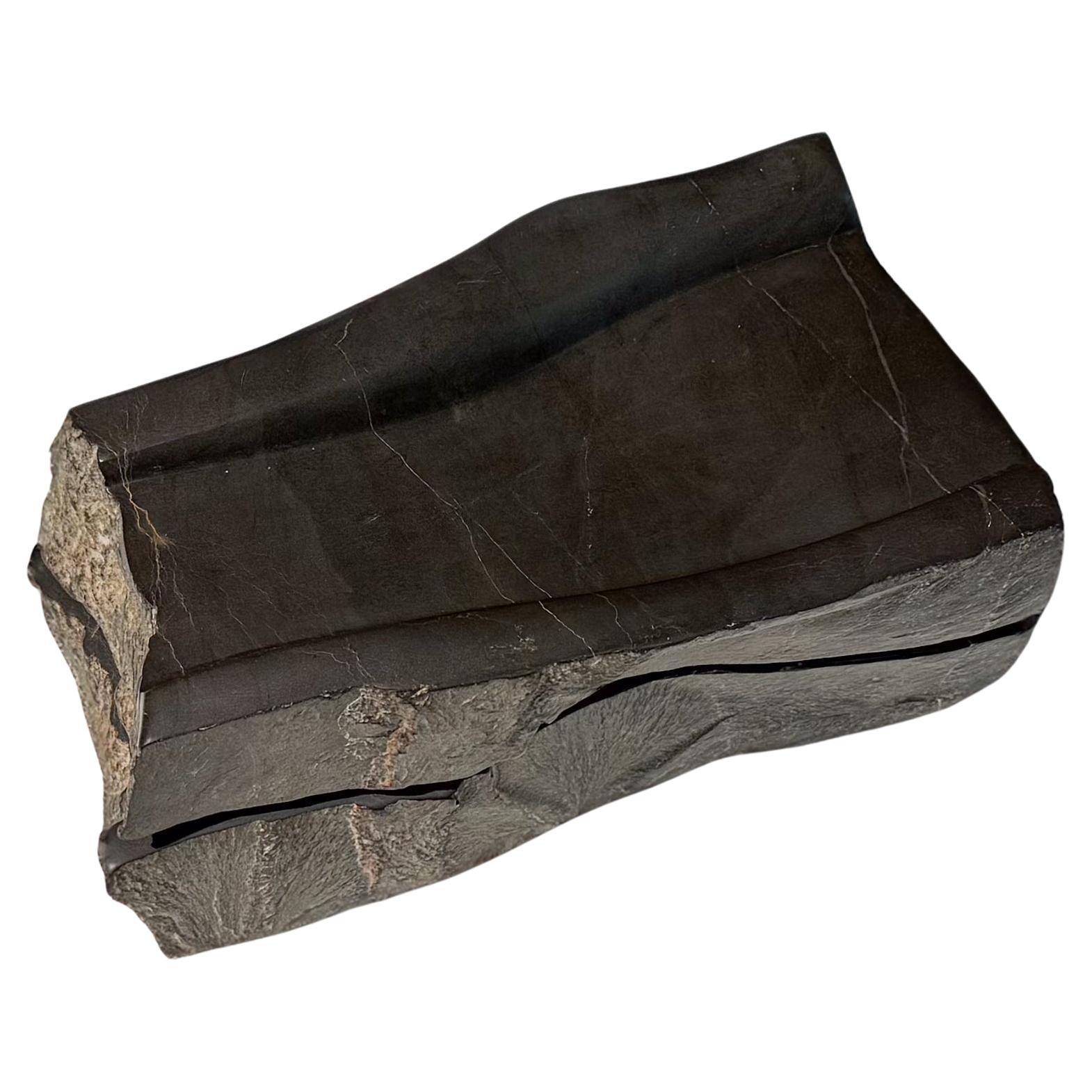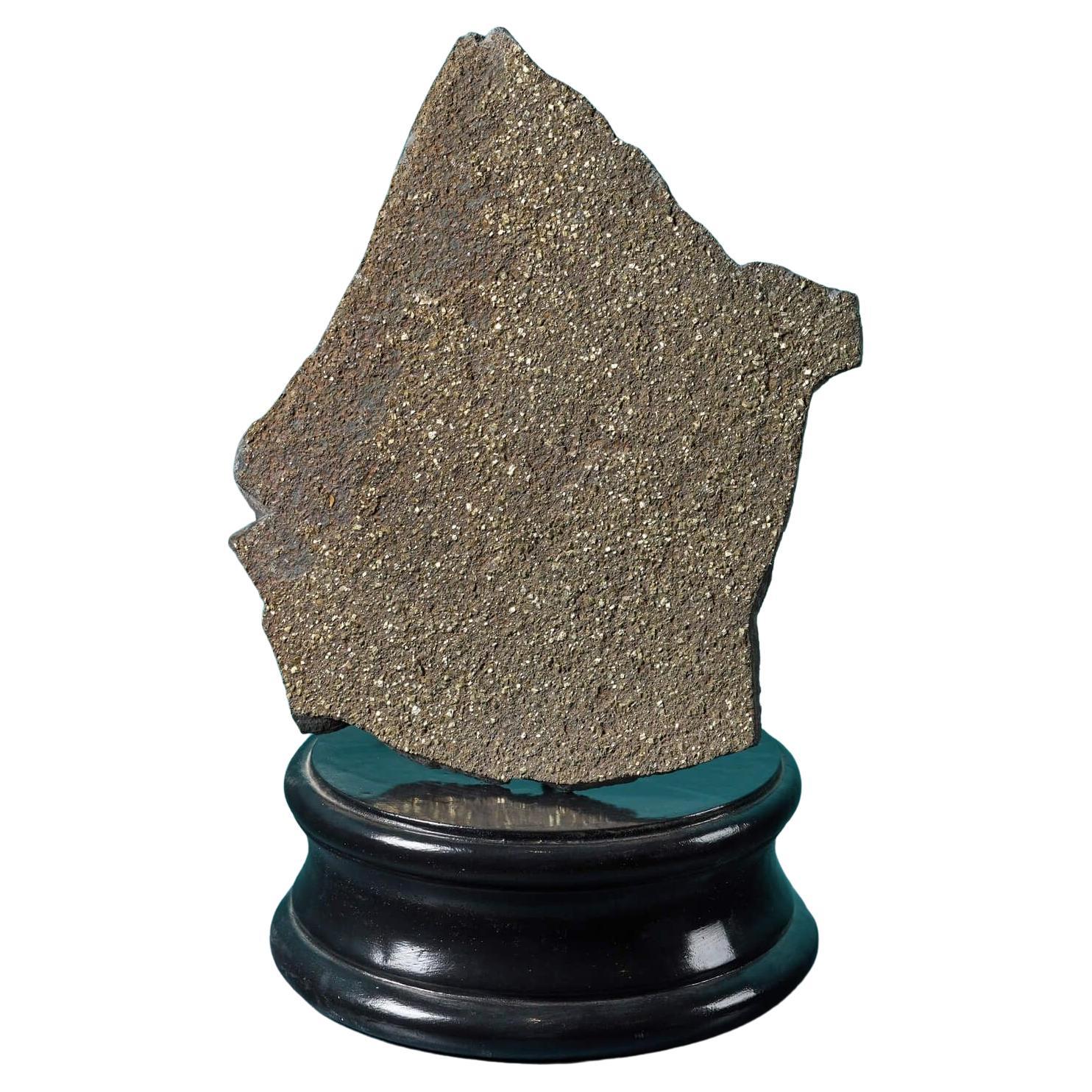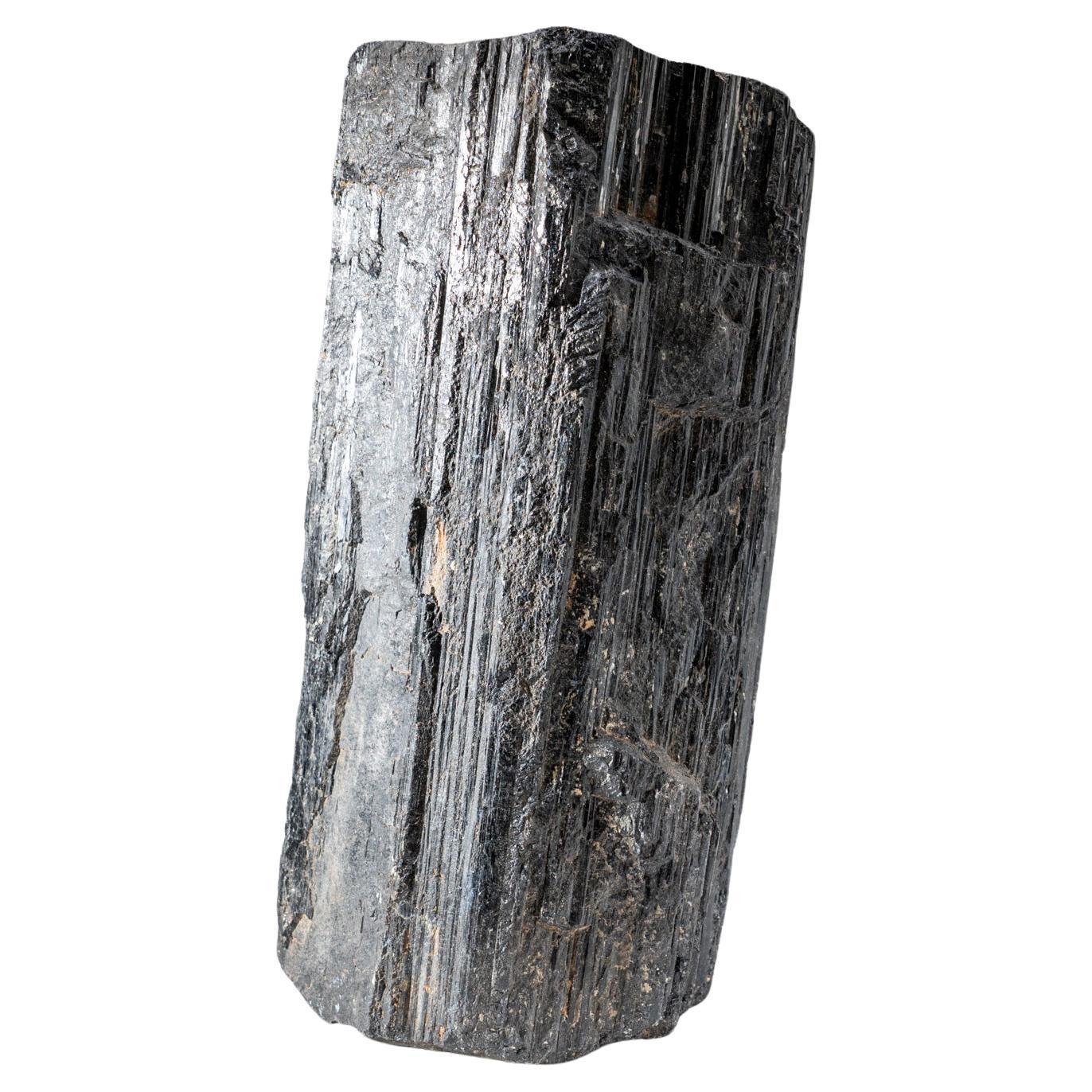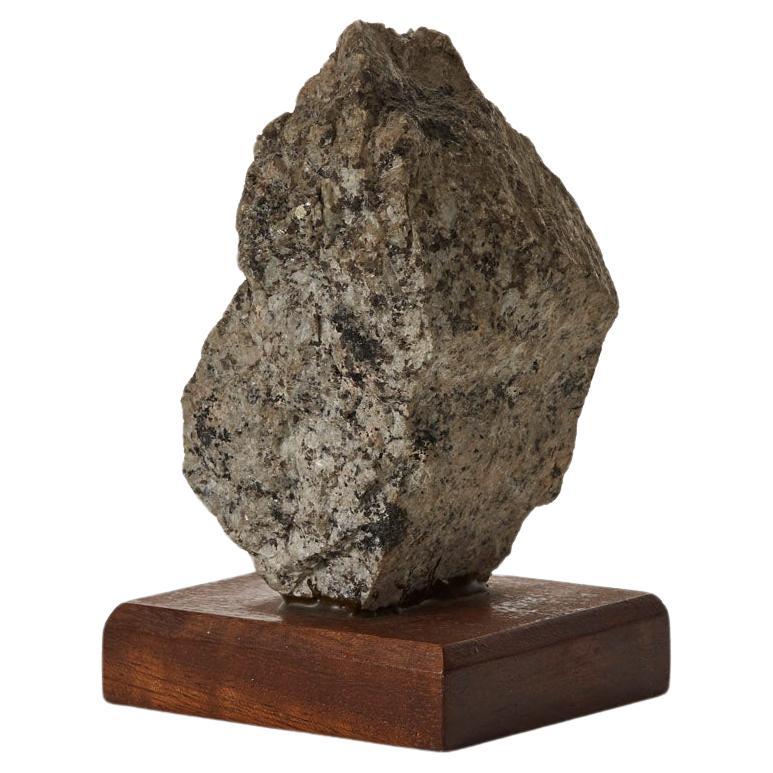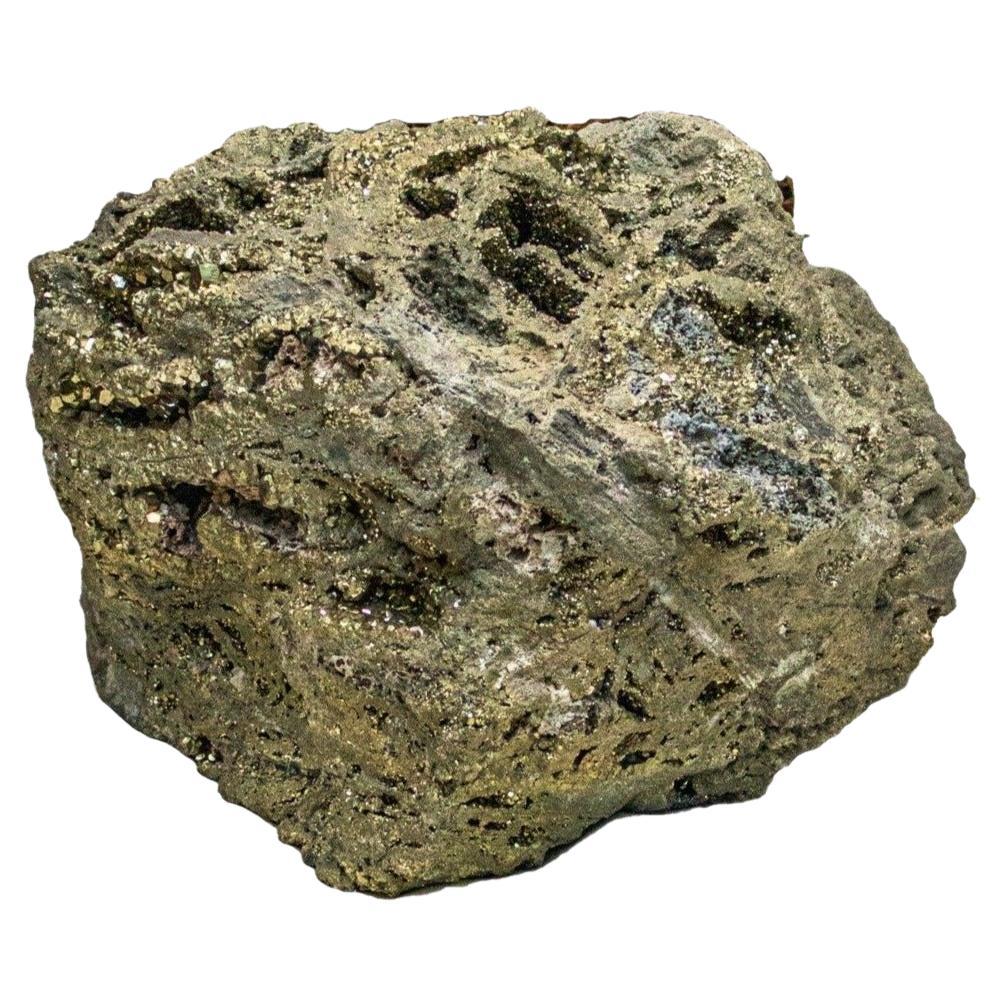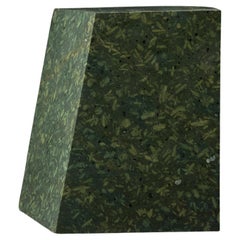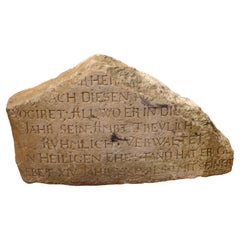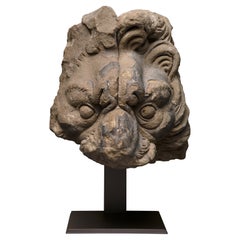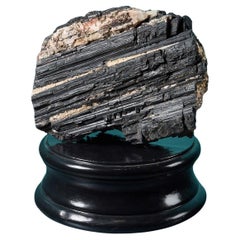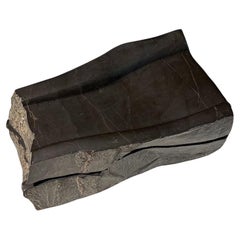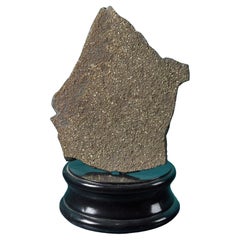Items Similar to Large Imperial Black Porphyry specimen
Want more images or videos?
Request additional images or videos from the seller
1 of 5
Large Imperial Black Porphyry specimen
$3,724.99
£2,831.62
€3,150
CA$5,234.92
A$5,692.23
CHF 2,999.25
MX$69,144.06
NOK 37,706.61
SEK 35,346.90
DKK 24,110.76
About the Item
Rare and Large Imperial Black Porphyry architectural fragment
partially polished,
23,5 x 15 x 12 cm
Porfido Nero is a rare Black Variety of Imperial Porphyry from Gebel Dokhan (the Ancient Mons Porphyrites) in the Eastern desert of Egypt. I dates back approximately 630 million years, resulting from dacitic-andesitic volcanic activity that led to the formation of extensive layers of effusive material, including tuffs and ignimbrites
The background is a uniform black, dotted with opaque crystalline white inclusions. Despite its breathtaking beauty, this material is notoriously difficult to work with due to its hardness. The quarries, located in the stark isolation of the Eastern Egyptian Desert, were situated along caravan routes that connected the commercial hubs of the Nile Valley and Coptos with the ports of Myos Hormos and Berenice, facilitating trade towards India and Arabia.
The Imperial quarries were worked from at least the 1st century through to the 5th century AD, using a workforce of slaves. In antiquity, these quarries were of such significance that they were managed directly by the imperial entourage.
Gnoli cites a few examples of Black Porphyry in the crustae of the floor of the Coenatio of the Domus Flavia, two columns in the Vatican Museums, and a wheel in the floor of the Salerno Cathedral, where there are also two small columns made of a black porphyry. The extraction, preparation, and transportation of this stone to Rome enhanced the city's architectural splendor and satisfied the tastes of affluent patrons.
Among all ancient materials, porphyry perhaps exudes the most symbolism; it represents a symbolic essence, epitomizing divinity, power, and courage. Its hardness made it challenging to work with yet it remains the most significant and expensive stone, symbolizing divine power and representing nobility, prestige, and wealth.
The ancient querries were rediscovered in 1823 and their location was described by the quarry hunter William Brindley (1887). They were never reopened on a commercial scale, so virtually every exemple of this stone seen around the world was quarried in Ancient Roman times.
Today, collectors particularly value specimens of colored marble quarried in antiquity, cherishing them as tangible links to the past.
- Dimensions:Height: 9.85 in (25 cm)Width: 5.91 in (15 cm)Depth: 4.73 in (12 cm)
- Style:Classical Roman (Of the Period)
- Materials and Techniques:
- Place of Origin:
- Period:
- Date of Manufacture:Unknown
- Condition:Wear consistent with age and use.
- Seller Location:Bruxelles, BE
- Reference Number:1stDibs: LU6666245083852
About the Seller
5.0
Vetted Professional Seller
Every seller passes strict standards for authenticity and reliability
1stDibs seller since 2022
15 sales on 1stDibs
Typical response time: <1 hour
- ShippingRetrieving quote...Shipping from: Bruxelles, Belgium
- Return Policy
Authenticity Guarantee
In the unlikely event there’s an issue with an item’s authenticity, contact us within 1 year for a full refund. DetailsMoney-Back Guarantee
If your item is not as described, is damaged in transit, or does not arrive, contact us within 7 days for a full refund. Details24-Hour Cancellation
You have a 24-hour grace period in which to reconsider your purchase, with no questions asked.Vetted Professional Sellers
Our world-class sellers must adhere to strict standards for service and quality, maintaining the integrity of our listings.Price-Match Guarantee
If you find that a seller listed the same item for a lower price elsewhere, we’ll match it.Trusted Global Delivery
Our best-in-class carrier network provides specialized shipping options worldwide, including custom delivery.More From This Seller
View AllElegant base in porfido Serpentino Antico
Located in Bruxelles, BE
Elegant fragment in porfido Serpentino Antico
19,5 x 18 x 12 cm
This beautiful fragment can be used as a base made of rare marble, ideal for displaying ancient or modern objects and...
Category
Antique 15th Century and Earlier Italian Classical Roman Natural Specimens
Materials
Marble
Large Medieval inscription
Located in Bruxelles, BE
Large Medieval German Inscription
stone
Germany, 14th century
46 x 83 x 13 cm
Category
Antique 15th Century and Earlier German Medieval Historical Memorabilia
Materials
Stone
$2,905 Sale Price
35% Off
Roman Lion's Protome - Gallo-Roman, 2nd century AD/3rd century
Located in Bruxelles, BE
Roman Lion's Protome
Sandstone
Gallo-Roman, 2nd century AD - 3rd century
Provenance : Private Collection Prof. Giesen (Konstanz on Bodensee), pré 1945
Most likely from the Chateau a...
Category
Antique 15th Century and Earlier German Classical Roman Animal Sculptures
Materials
Sandstone
Two cylindrical colored marble specimens
Located in Bruxelles, BE
Two cylindrical specimens in Breccia Skyros Marble or Settebassi
Those two cylindrical specimens are perfect to serve as bookends or to presents works o...
Category
Antique Late 19th Century Italian Classical Roman Bookends
Materials
Breccia Marble
$2,447 Sale Price / set
20% Off
Bronze Mortar, Tuscany, Second Half of 16th Century
Located in Bruxelles, BE
Bronze mortar with garlands, flowers and putti - Tuscany , second half of 17th century.
Measures: height 10
diameter : 13 cm
Artisans and healers used mortars for grinding food...
Category
Antique 16th Century Italian Renaissance Scientific Instruments
Materials
Bronze
Marble Roman relief representing a Christogram
Located in Bruxelles, BE
Marble Roman relief representing a Christogram
Roman relief - 4th century
25 x 22 x 8 cm
Provenance :
Collection of the Château de B. À Nevers by Georges C.S., scholar born in 1833 and deceased in 1909
The entire castle and its collections were acquired in 1938 by the current owners of the estate
A christogram is a monogram or combination of letters that forms an abreviation for the name of Jesus Christ.
This rare fragment combines chi (X) and rho (P), the first two letters of Christ's name in Greek and it is one of the oldest and most popular early christian symbol. The monogram of Christ, or chrismon, is also a powerful symbol of imperial victory: it appeared to Emperor Constantine the Great before his battle against Maxentius in ad 312, promising victory in the name of Christ. In Plato's Timaeus, it is explained that the two bands which form the "world soul" (anima mundi...
Category
Antique 15th Century and Earlier Italian Classical Roman Figurative Scul...
Materials
Marble
$3,454 Sale Price
30% Off
You May Also Like
Large Natural Black Tourmaline Mineral Specimen
Located in Wormelow, Herefordshire
A large natural black tourmaline mineral specimen originating from Zimbabwe.
While tourmaline may not shine as other bright as other minerals, it offers a distinctive look almost li...
Category
Antique 15th Century and Earlier Zimbabwean Natural Specimens
Materials
Natural Fiber
Sculptural Black Stone Handcrafted – Pedra Negra F6 by Ricard Casabayó
By Ricard Casabayó
Located in Barcelona, ES
A new functional sculpture made from black stone from Aragon has an organic shape. Can be used as a soap dish or storage for small objects. Pedra Negra F-6 was made by the Barcelona-...
Category
2010s Spanish Abstract Sculptures
Materials
Stone
Large Natural Pyrite on Welsh Slate
Located in Wormelow, Herefordshire
A large natural pyrite specimen on Welsh slate. Originating from a mine in Llanberis, Gwynedd, Wales, this large slate displays small lustrous pyrite crystals to one face.
Naturally...
Category
Antique 15th Century and Earlier Welsh Natural Specimens
Materials
Natural Fiber
Genuine Black Tourmaline Crystal From India (16.8 lbs)
Located in New York, NY
AAA quality raw black tourmaline crystal from India. This Specimen deeply striated, with a high-wet luster.
Under Black Tourmaline's protection, not even the worst downer can burst ...
Category
21st Century and Contemporary Brazilian Natural Specimens
Materials
Crystal, Quartz, Other
$1,200 Sale Price
20% Off
Organic stone sculpture - France, 20th century
Located in London, GB
A sculpture in the loosest sense, this weighty stone fragment is knitted with geologic seams. The rough surface has a rich minerality in contrast with the chamfered wooden plinth. Th...
Category
20th Century French Natural Specimens
Materials
Stone
Large Pyrite Mineral, 130 Lbs / 59 Kg
By Interi
Located in Dublin, Dalkey
Pyrite mineral specimen. It is an usually large piece of pyrite and very rare to come by in this size (130 lbs / 59 kg).
Pyrite, also called iron pyr...
Category
21st Century and Contemporary American Organic Modern Natural Specimens
Materials
Pyrite
More Ways To Browse
Antique Imperial Furniture
Marble Specimen
Small Columns
Large Antique Fragment
Imperial Porphyry
Roman Porphyry
Large Lapis Lazuli Spheres
Large Shiva Lingam Stone
Liana Vine
Mesh Cactus
Montana Antiques
Nautilus Shell On Stand
Ostrich Egg On Stand
Springer Petrified
Turban Shell
Antique Narwhal Tusk
Bark Beater
Colla Wood
